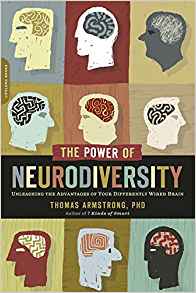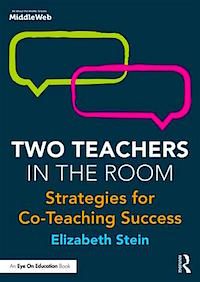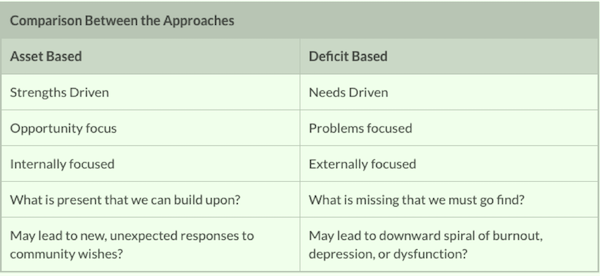Making the Ethical Leap to Strengths-Based IEPs

Glorious moments of learning await me each day. Yet this day I found myself additionally sparked! The enticing fact-sheet title read: Strengths-Based IEPs: What You Need to Know. My attention quickly shifted from my usual curious nature to one of joyful validation – for me it was a sense where past meets future – a voice reminding me to hang in there – saying…don’t give up – it will happen!
For purposes of this post, I will share two reasons (although there’s more!) why this topic thrills me beyond boundaries: perceptions and student empowerment.
Perceptions
Typically educators take one of two perspectives as they view students with disabilities. One is to view them as children with deficits. The other is to see them as children with strengths and assets. What do I mean by assets? Just check out this link discussing how to apply an assets-based mindset when designing accommodations through the perception of students’ strengths – and be ready to be inspired!
As you may know, one of my greatest pet peeves is our tendency to approach our students with disabilities using a deficit model. It never felt right to me. And after 26 years in special education, I can honestly say, the time has finally come (or is at least getting closer) for us to embrace the kind of strength-based IEPs that will allow for the process of meaningful and equitable inclusive learning experiences to unfold.

Co-teachers, everywhere – identify and support your students’ strengths as a way to guide their progress. In fact…make Thomas Armstrong’s book The Power of Neurodiversity: Unleashing the Advantages of Your Differently Wired Brain a summer read—you will be glad you did! Then come back here and get some more conversations going as we plan for next school year – let’s do it!
Focusing on each student’s strengths? I mean come on—yes! It is way beyond time for this to become the common approach in thinking about designing learning for all students.
It speaks to everything I believe our students (and families) deserve—a chance for authentic, meaningful learning to truly prepare each learner for success along their personal future educational journeys. Look at the explanation of this research-based chart comparing asset and deficit approaches to community work. Now just substitute “student” for “community.” It’s spot on!
Student Empowerment
As we find ourselves in yet another busy IEP season, it can easily become a dizzying experience as we enter the spinning cycle to assess, collaborate, and plan recommendations for students’ educational programming for next school year.
This can be a potentially powerful individualized experience, of course, but too often it seems to me like this process becomes an IEP assembly line of sorts. The clock is ticking to assess and to write an IEP for next fall while teachers are still entrenched in the countless decisions and responsibilities of the current school year.
My question has always been…Where is the student voice in the process? As early as 3rd grade, I believe that students should be a part of the IEP development process (see tip #2).
I’m going to get right to the point here with two tips that I hope co-teachers may do NOW and forever more!
Tip #1: Expand your view. Choose a focus on student strengths!
It is vital that we remember that although we are entrenched in a system that still mostly embraces the deficit model, we do not have to! We can CHOOSE to take on a new perspective in our classrooms.
Remember, you have control as to HOW you design instruction in your room. So make the mindful decision to focus on students’ strengths as you work to elevate any area where they need to improve.
For example, let’s consider a student who needs to improve mathematical problem solving skills, yet has strong social skills. This student could easily be empowered by YOUR decision to create cooperative learning groups (rather than pure teacher-directed activities) where students work together to solve the math problems. This frees the teachers up to walk around working with individual students in groups for some side-by-side, skill-based direct instruction. (The best part is peer modeling and student voice are at the center of your skillful teaching plan.)
Bottom line: Use students’ strengths to create the space to provide some meaningful direct instruction to work on areas of need. Are you ready to begin? The Universal Design for Learning (UDL) Guidelines is a solid framework you can count on to ensure that you are on the right track for and with your students.
Tip #2: Empower EACH student. Make them a vital part of the process.
Remember, the IEP process is for your students, right? So…guide their self-regulation skills and executive function skills by making those skills a part of their focus on the future.
It could be as simple as having conversations with each student. Review students’ progress and get their perspective into how they think they are doing and what goals they believe they need to work on. Yes! Students as young as 8 years old (3rd grade) do have thoughts about themselves as learners. And they can easily be a part of this self-reflective and empowering process that could guide them to a life-long strengths-based focus on being resilient and living a growth-mindset lifestyle.
Oh! and don’t just speak with students with disabilities. Use this same empowering opportunity to speak with each student in the room. This will ensure no one is singled out. You are sending a clear message to every student that they are in charge of their own learning.
So…what are you waiting for?! Get those conversations going! With two teachers in the room…it is beyond manageable. Ask yourself and your partner: Are you ready to ditch the deficit model? Are you ready to include students in conversations as you develop IEPs?
________________________________________






































